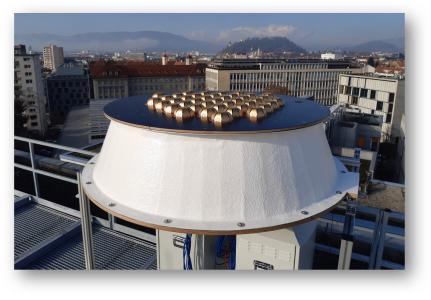Blind GNSS software receiver tool for field test assessment in harsh environments

The objectives of the activity are the following: (i) Development of a Software (SW) tool able to recover automatically unknown pseudorandom (PRN) codes from low-noise signal recordings (potentially generated from a Radio Frequency Constellation Simulator (RFCS) and/or high-gain antennas). (ii) Development of a blind GNSS SW receiver able to use automatically the recovered PRN codes for the acquisition and tracking of non-public signals recorded with nominal GNSS antennas in the field, in particular in urban environments (covering harsh propagation conditions with strong fading). The blind GNSS SW receiver shall have the capability to track in parallel public signals (e.g. GPS/Galileo L1) and perform single- and multi-constellation positioning including both public and non-public signals. (iii) Assess the performance of the blind GNSS SW receiver with real field signal recorded in urban propagation conditions, focusing on the assessment of acquisition, tracking and positioning performance of the non-public signals in harsh propagation conditions.
The possibility to acquire and track signals for which the PRN code is not public (e.g. as for Galileo Public Regulated Service or any other non-public GNSS service) is of high interest in order to be able to assess, with real field signal, new acquisition and tracking techniques that otherwise can only be assessed with a full GNSS receiver with access to those PRN codes. In this context, the recovery of the unknown PRN codes from low-noise signal recordings (e.g. from a Radio Frequency Constellation Simulator (RFCS)) performed in parallel to the signal recordings from a typical GNSS antenna in harsh propagation conditions (e.g. in urban conditions) can be exploited. A blind GNSS SW receiver shall be developed in this activity, including the automatic recovery of non-public PRN codes (from low-noise signal recordings from a RFCS and/or high-gain antennas) and its optimal usage in the acquisition, tracking and positioning of the same non-public signals recorded (for the same time period) in urban environments with nominal GNSS antennas. At least the usage of RFCS shall be considered for the recovery of non-public PRN codes. The blind GNSS SW receiver shall be implemented in Matlab in a modular and open way (i.e. fully accessible and document code) in order to be able to easily update it in the future with new algorithms. The implementation shall be optimized in order to reduce the processing time of the receiver (close to real-time processing shall be targeted). Moreover, the blind GNSS SW receiver shall implement high-sensitivity acquisition and tracking architectures, covering, but not limited to, the usage of state-of-the-art open-loop and multi-correlator architectures. In this context, the acquisition and tracking shall be performed even at low C/No conditions (down to 20 dBHz or even below, depending on the signal structure being tracked). Furthermore, the receiver shall be able to track in parallel public signals (e.g. GPS/Galileo L1) and enable the positioning in single and multi-constellation configurations. Finally, the performance assessment of the receiver shall be performed in representative urban environments.
